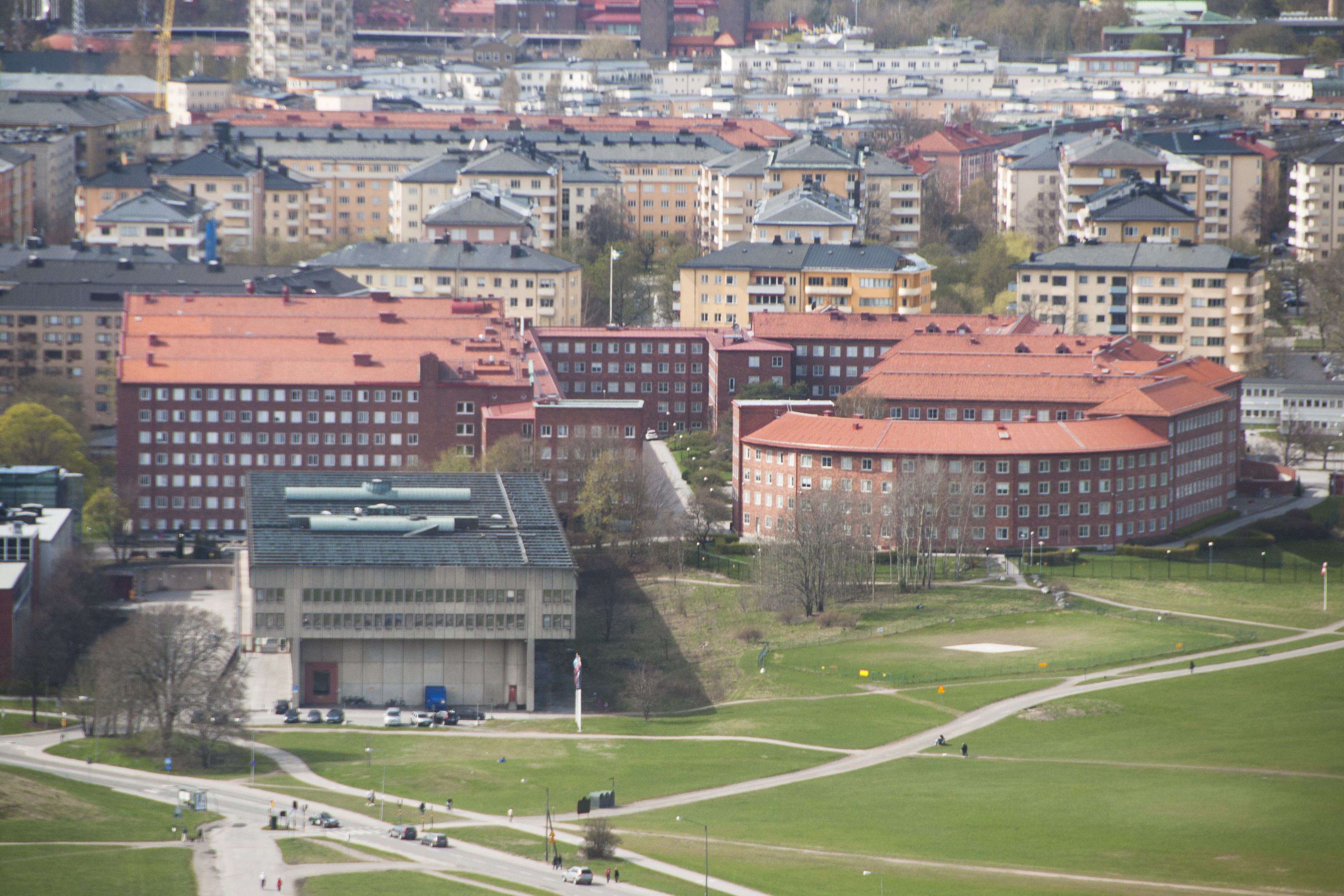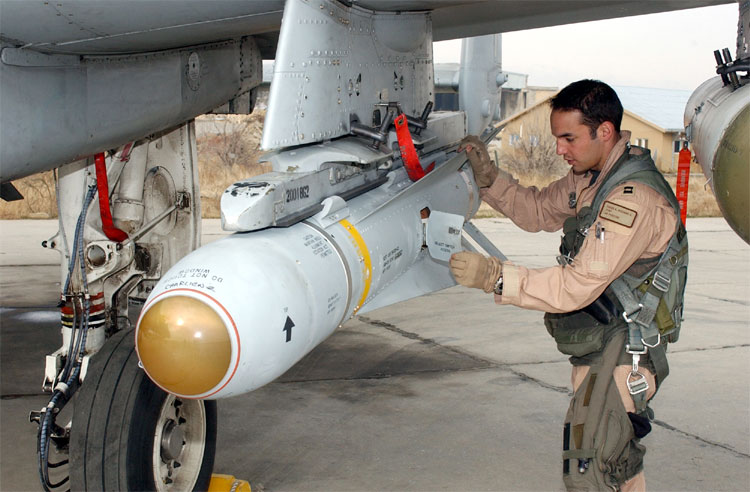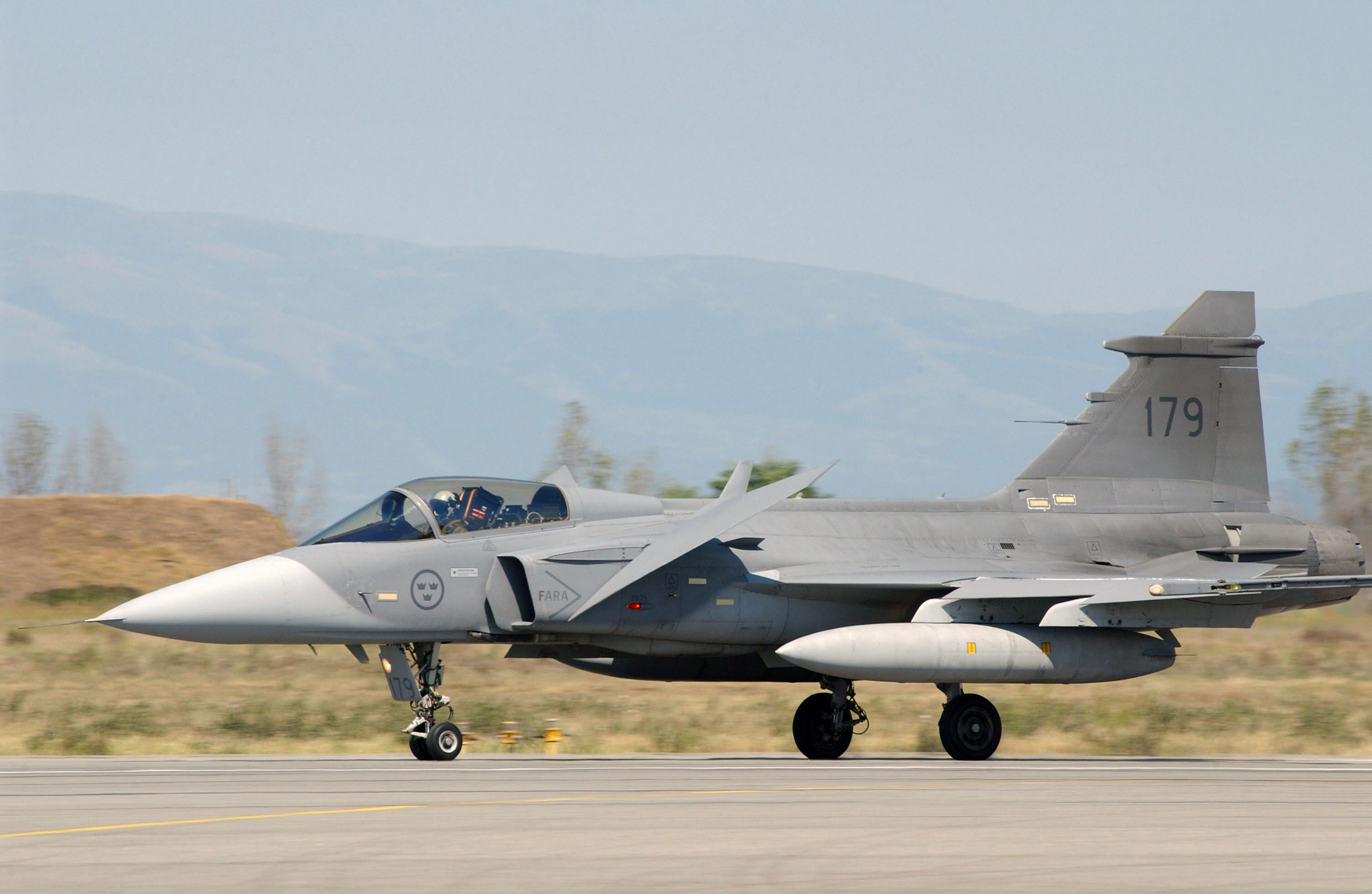|
Saab Rb 08
Robot 08 (Rb 08) was a Swedish anti-ship missile. It was the first operational ship-based anti-ship missiles. The design was a development of the French Nord Aviation CT20 target missile and was manufactured by Saab. The project to develop the weapon was initiated in the 1950s and the missile entered service in 1966 aboard the s, later also serving with the Swedish Coastal Artillery. Guidance was via radio command and active radar homing. The missile was replaced by the RBS-15, being retired in 1995. Development The Royal Swedish Naval Materiel Administration experimented in the 1950s with the development of an anti-ship missile, with the project name M20. Disputes with the Air Force Materiel Administration over responsibility for missile development prolonged the development. Therefore, in 1962 the Naval Materiel Administration directed Saab to develop an anti-ship version of Nord Aviation's CT20 target missile. Saab worked with the French company on the development, with th ... [...More Info...] [...Related Items...] OR: [Wikipedia] [Google] [Baidu] |
Anti-ship Missile
An anti-ship missile (AShM) is a guided missile that is designed for use against ships and large boats. Most anti-ship missiles are of the sea skimming variety, and many use a combination of inertial guidance and active radar homing. A good number of other anti-ship missiles use infrared homing to follow the heat that is emitted by a ship; it is also possible for anti-ship missiles to be guided by radio command all the way. The first anti-ship missiles, which were developed and built by Nazi Germany, used radio command guidance.https://airandspace.si.edu/collection-objects/bomb-guided-fritz-x-x-1/nasm_A19840794000#:~:text=The%20Fritz%20X%2C%20also%20known,the%20Henschel%20Hs%20293%20missile. These saw some success in the Mediterranean Theatre during 1943–44, sinking or heavily damaging at least 31 ships with the Henschel Hs 293 and more than seven with the ''Fritz X'', including the Italian battleship ''Roma'' and the light cruiser . A variant of the HS 293 had a TV ca ... [...More Info...] [...Related Items...] OR: [Wikipedia] [Google] [Baidu] |
Royal Swedish Air Force Materiel Administration
The Royal Swedish Air Force Materiel Administration ( sv, Kungliga Flygförvaltningen, abbreviated KFF) was a Swedish government agency active between the years 1936 and 1968. The agency was amalgamated into the Swedish Defence Materiel Administration. History The Royal Swedish Air Force Materiel Administration was established on 1 July 1936 with the task in technical and economic terms to exercise top management and oversight of the Swedish Air Force. The agency was first organized in the Materiel Department (1936–1954), Commissariat Department (1936–1954), Building Department (1936–1948, was merged with the exception of the Airfield Department (''Flygfältsbyrån'') into the Fortifications Administration) and the Civil Office (1936–1954). In 1948 the Airfield Department (1948–1963) became an own unit, and in 1952/1953 so did the Central Planning (to 1963) and the Personnel Office (until 1954). A reorganization on 1 July 1954 established, in addition to the Airfield D ... [...More Info...] [...Related Items...] OR: [Wikipedia] [Google] [Baidu] |
Air-to-surface Missile
An air-to-surface missile (ASM) or air-to-ground missile (AGM) is a missile designed to be launched from military aircraft at targets on land or sea. There are also unpowered guided glide bombs not considered missiles. The two most common propulsion systems for air-to-surface missiles are rocket motors, usually with shorter range, and slower, longer-range jet engines. Some Soviet-designed air-to-surface missiles are powered by ramjets, giving them both long range and high speed. Guidance for air-to-surface missiles is typically via laser guidance, infrared guidance, optical guidance or via satellite guidance A guided bomb (also known as a smart bomb, guided bomb unit, or GBU) is a precision-guided munition designed to achieve a smaller circular error probable (CEP). The creation of precision-guided munitions resulted in the retroactive renaming of ... signals. The type of guidance depends on the type of target. Ships, for example, may be detected via passive radar or ... [...More Info...] [...Related Items...] OR: [Wikipedia] [Google] [Baidu] |
Surface-to-surface Missile
A surface-to-surface missile (SSM) or ground-to-ground missile (GGM) is a missile designed to be launched from the ground or the sea and strike targets on land or at sea. They may be fired from hand-held or vehicle mounted devices, from fixed installations, or from a ship. They are often powered by a rocket engine or sometimes fired by an explosive charge, since the launching platform is typically stationary or moving slowly. They usually have fins and/or wings for lift and stability, although hyper-velocity or short-ranged missiles may use body lift or fly a ballistic trajectory. The V-1 flying bomb The V-1 flying bomb (german: Vergeltungswaffe 1 "Vengeance Weapon 1") was an early cruise missile. Its official Ministry of Aviation (Nazi Germany), Reich Aviation Ministry () designation was Fi 103. It was also known to the Allies as the buz ... was the first operational surface-to-surface missile. Contemporary surface-to-surface missiles are usually guided missile, guided. An ... [...More Info...] [...Related Items...] OR: [Wikipedia] [Google] [Baidu] |
Swedish Navy
The Swedish Navy ( sv, Svenska marinen) is the naval branch of the Swedish Armed Forces. It is composed of surface and submarine naval units – the Fleet () – as well as marine units, the Amphibious Corps (). In Swedish, vessels of the Swedish Navy are given the prefix "HMS", short for (His/Her Majesty's Ship). In English, this is sometimes changed to "HSwMS" ("His Swedish Majesty's Ship") to differentiate Swedish vessels from those of the British Royal Navy. Founded under King Gustav I in 1522, the Swedish navy is one of the oldest continuously serving navies in the world, celebrating its 500th anniversary in 2022. History Early Swedish kings ( 9th–14th centuries) organised a Swedish Navy along the coastline through . This involved combined rowing and sailing ships (without artillery). This system became obsolete with the development of society and changes in military technology. No later than in the 14th century, the duty to serve in was replaced by a tax ... [...More Info...] [...Related Items...] OR: [Wikipedia] [Google] [Baidu] |
Fragmentation (weaponry)
Fragmentation is the process by which the casing, shot, or other components of an anti-personnel weapon, bomb, barrel bomb, land mine, IED, artillery, mortar, tank gun, or autocannon shell, rocket, missile, grenade, etc. are dispersed and/or shattered by the detonation of the explosive filler. The correct term for these pieces is "fragmentation"; "shards" or "splinters" can be used for non-preformed fragments. Preformed fragments can be of various shapes (spheres, cubes, rods, etc.) and sizes, and are normally held rigidly within some form of matrix or body until the high explosive (HE) filling is detonated. The resulting high-velocity fragments produced by either method are the main lethal mechanisms of these weapons, rather than the heat or overpressure caused by detonation, although offensive grenades are often constructed without a frag matrix. These casing pieces are often incorrectly referred to as "shrapnel", particularly by non-military media sources. History The ... [...More Info...] [...Related Items...] OR: [Wikipedia] [Google] [Baidu] |
Contact Fuze
A contact fuze, impact fuze, percussion fuze or direct-action (D.A.) fuze (''UK'') is the fuze that is placed in the nose of a bomb or shell so that it will detonate on contact with a hard surface. Many impacts are unpredictable: they may involve a soft surface, or an off-axis grazing impact. The pure contact fuze is often unreliable in such cases and so a more sensitive graze fuze or inertia fuze is used instead. The two types are often combined in the same mechanism.Fuze, D.A. and Percussion, No. 119, Artillery fuzes The British Army's first useful impact fuze for high-explosive shells was the '' Fuze No. 106'' of World War I. (''illus.'') This used a simple protruding plunger or ''striker'' at the nose, which was pushed back to drive a firing pin into the detonator. Its ability to burst immediately at ground level was used to clear the barbed wire entanglements of no man's land, rather than burying itself first and leaving a deep, but useless, crater. The striker ... [...More Info...] [...Related Items...] OR: [Wikipedia] [Google] [Baidu] |
Robot 08 Skott
A robot is a machine—especially one programmable by a computer—capable of carrying out a complex series of actions automatically. A robot can be guided by an external control device, or the control may be embedded within. Robots may be constructed to evoke human form, but most robots are task-performing machines, designed with an emphasis on stark functionality, rather than expressive aesthetics. Robots can be autonomous or semi-autonomous and range from humanoids such as Honda's ''Advanced Step in Innovative Mobility'' ( ASIMO) and TOSY's ''TOSY Ping Pong Playing Robot'' (TOPIO) to industrial robots, medical operating robots, patient assist robots, dog therapy robots, collectively programmed ''swarm'' robots, UAV drones such as General Atomics MQ-1 Predator, and even microscopic nano robots. By mimicking a lifelike appearance or automating movements, a robot may convey a sense of intelligence or thought of its own. Autonomous things are expected to proliferate in th ... [...More Info...] [...Related Items...] OR: [Wikipedia] [Google] [Baidu] |
Nord Aviation
Nord-Aviation ( en, Northern Aviation) was a state-owned French aircraft manufacturer. The bulk of its facilities were based on the site of Bourges airport, in the département of Cher, in central France. On 1 October 1954, Nord Aviation was created as a result of the acquisition of SFECMAS (Société française d'étude et de construction de matériels aéronautiques spéciaux) by SNCAN (Société nationale de constructions aéronautiques du Nord). The company's name, ''Nord'', also became commonly used as a generic name referring to the Pingouin light aircraft. It manufactured numerous aircraft; perhaps Nord Aviation's most successful aircraft was the Nord Noratlas, a utility transport used by both military and civilian customers. Other aircraft included general aviation, trainers and experimental aircraft, as well as other transports. Nord Aviation also developed and produced its own range of missiles; perhaps the most famous of these was the Exocet, a sea-skimming anti-shi ... [...More Info...] [...Related Items...] OR: [Wikipedia] [Google] [Baidu] |
Royal Swedish Naval Materiel Administration
The Royal Swedish Naval Materiel Administration ( sv, Kungliga Marinförvaltningen, KMF) was the central board of the Swedish Navy in technical and economic terms. It was active between the years 1878 and 1968 when it was disbanded and amalgamated into the Defence Materiel Administration. History The Naval Materiel Administration was established on 1 January 1878 after the approval of the Riksdag and the royal decree, by the transformation of the Management of the Naval Affairs (''Förvaltningen av sjöärendena'') and the merger between Ministry for Naval Affairs' military and technical agencies. The Naval Materiel Administration consisted of three equal units: the Military Department, the Civil Department and the Engineering Department, each with its own chief but with common office and secretariat. The Naval Materiel Administration acted as the agency under the Ministry for Naval Affairs and was the head board for the defense fleet in military, technical and financial matters. ... [...More Info...] [...Related Items...] OR: [Wikipedia] [Google] [Baidu] |
Saab AB
Saab AB (originally , later just SAAB and Saab Group) is a Swedish aerospace and defence company, founded in 1937. Headquartered in Stockholm, the development and the manufacturing is undertaken in Linköping. Saab produced automobiles from 1947 until 1990 when the automobile division was spun off as Saab Automobile, a joint venture with General Motors. The joint venture ended in 2000 when GM took complete ownership. From 1968 onwards the company was in a merger with commercial vehicle manufacturer Scania-Vabis, known as Saab-Scania. The two were de-merged in 1995 by the new owners, Investor AB. Despite the demerger, both Saab and Scania share the right to use the griffin logo, which originates from the coat of arms of the Swedish region of Scania. History "Svenska Aeroplan AktieBolag" (Swedish for "Swedish Aeroplane Company Limited") (SAAB) was founded in 1937 in Trollhättan, with the merger of Svenska Aero AB (SAAB) and Linköping based ASJA the headquarters moved to Lin ... [...More Info...] [...Related Items...] OR: [Wikipedia] [Google] [Baidu] |

.jpg)





